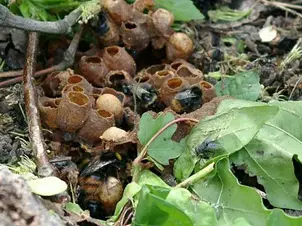top of page

Bee Informed
Education and Inspiration to Help our Humble Bumblebee


Planting for Bumblebees & Other Pollinators
Helpful tips for starting and maintaining a pollinator friendly garden Pollinators in New Zealand and across the world are in serious...
3 min read


Identification of Bumblebees in NZ
Did you know there are only 4 species of bumblebee in New Zealand?
2 min read


New Zealand Bumblebees in the Garden - Month by Month
Keep up with the life cycle of New Zealand bumblebees month by month
1 min read


Moving a Bumblebee Nest
Moving a Bumblebee nest - generally we do not advise that people move nests unless it is absolutely necessary.
3 min read


Bumblebee Nests at Your Place - FAQ
Generally we do not advise that people move nests unless it is absolutely necessary. Most bumblebee colonies do not survive being relocated
2 min read


Do Bumblebees Like Petunia or Vegetables Flowers?
whether a flower will be visited by a particular species of bee depends on a number of factors.
2 min read


The Bumblebee life cycle
Bumblebees are social insects and can live in nests of up to 400 bees. Each nest has a queen and will last for only one year.
1 min read


Why Bumblebees Need Our Help
Bumblebees are important because they pollinate our summer gardens, our wildflowers and our crops.
3 min read

bottom of page
